Let’s be honest…
Getting traffic to a blog is a real pain.
It takes time … energy … resources.
And, you have to know how to do it properly from the start.
I’ve been blogging for 10+ years and have grown my own websites and clients’ massively through good content.
In this article, I’ll be going through 20+ tips on how to get more blog traffic that you can apply today.
Enjoy. 🙂
Why is my blog not getting traffic?
One of the most common questions I get asked is “Why is my blog not getting traffic?”

There are a number of reasons why this could be happening.
…It could be that your blog content isn’t interesting or engaging enough.
…It could be that you’re not doing any SEO and relying solely on social media for traffic (which is fine, but you need to do both).
Or, it could be that you’re not promoting your blog posts enough.
These are just some of the reasons why your blog might not be getting the traffic it deserves.
Reading this article will give you insight into what you haven’t been doing but should to grow a successful blog.
How long does it take for a blog to get traffic?
This is a difficult question to answer because it really depends on a number of factors.
The quality of content you put out, publishing frequency, and promotional methods will change it greatly.
And, it depends on how lucky you are with the timing of your promotions (e.g. if you promote a post when everyone is online, you’re more likely to get traffic).
That being said, it usually takes anywhere from a few weeks to a few months for a new blog to start getting traction and traffic.
Of course, there are always exceptions to this rule like if you go viral on a specific platform.
How much traffic do you need to monetize a blog?
This is another tough question because it depends on your niche, product, and audience.
Because the thing is, you don’t necessarily need more traffic to make more money.
You can increase the conversion rate of your existing blog, funnel, or product and BAM… you’re making more money.
That being said, as a general rule of thumb, you need at least 1000-2000 visitors per day to start monetizing a blog successfully.
Sure, you can generate income with less traffic, but 1,000+ visitors is when commissions, sales, and ad revenue starts to make a difference.
How to get more traffic to your blog
Alright, let’s get into the meat and potatoes of today’s article: getting more traffic to your blog!
1. Content velocity
One of the most important things you need to do to increase blog traffic is to publish more content.
This might seem like a no-brainer, but I see so many bloggers get stuck in “analysis paralysis” mode where they think everything needs to be perfect before it goes live.
Newsflash: it doesn’t!
Your audience would much rather see you put out content that’s 80% complete and polished than wait months (or even years) for something that’s “perfect.”
If you want to grow your blog, you need to start publishing more content on a regular basis.
We call this content velocity.
In fact, the average #1 result on Google has been live for close to 950 days!
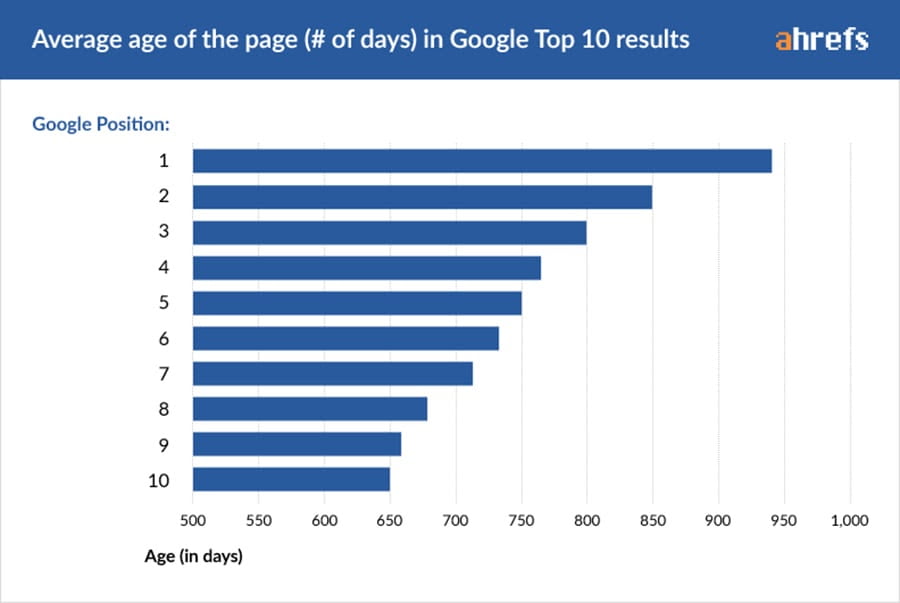
It takes time for blog posts to age and climb up the Google ladder, so the sooner, the better.
On that note, you might ask yourself, “How often should I publish?”
It really depends on your niche, but as a general rule of thumb, try to publish at least once a week.
If you can swing it, publishing multiple times a week would be ideal.
Another way to increase traffic is by …
varying the content you publish.
Don’t just stick to writing blog posts; mix it up with infographics, videos, and even podcasts.
Not only will this help you reach a wider audience (since people consume content in different ways), but it will also keep your existing readers engaged.
And, if you really want to go above and beyond, you can even repurpose your old content into new formats.
For example, if you have an old blog post that’s doing well, consider turning it into an infographic or video.
This is a great way to breathe new life into your old content and get even more traffic.
More on those strategies later. 😉
2. Keyword research
If you want to drive more traffic to your blog, you need to start with keyword research.
Keyword research is the process of finding and targeting keywords that people are searching for in Google (and other search engines).
Not only will this help you improve your SEO, but it will also help you come up with topics for new blog posts, social media content, and even email marketing campaigns.
To do keyword research, there are a few different blogging tools you can use …
The first is Google Ads Keyword Planner.
This tool was designed for advertisers, but it’s actually pretty helpful for bloggers as well.
Just create a free account and then enter in some seed keywords related to your niche.
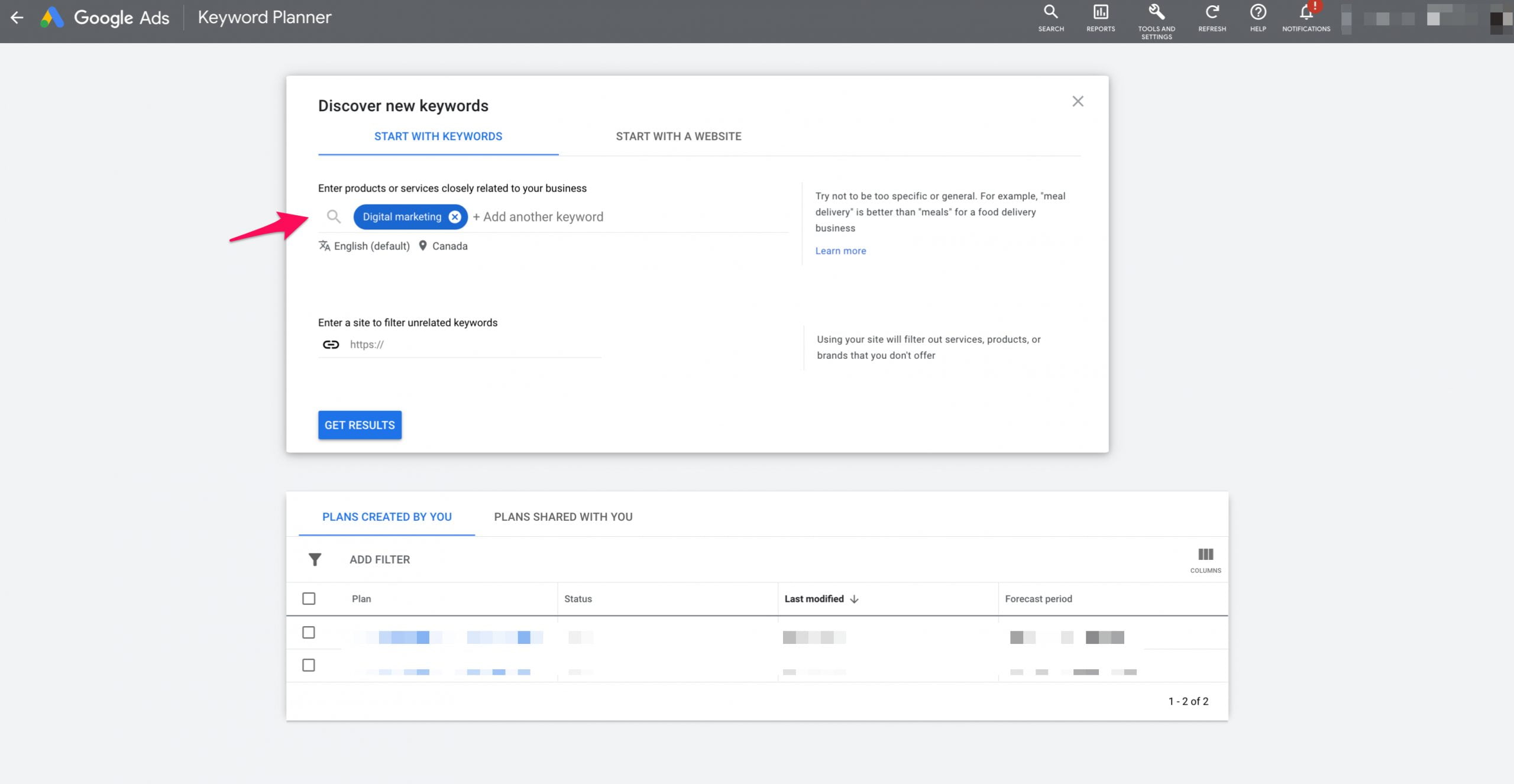
Google will then show you how many people are searching for those keywords every month as well as some related keywords.
Another great tool for keyword research is SEMRush.
SEMRush is a paid tool, but they do offer a free trial so you can test it out before you commit to anything.
Once you create an account, just enter in your website’s URL and SEMRush will show you all kinds of data related to your site, including the keywords you’re currently ranking for and how much traffic those keywords are getting.

They’ll also show you some of your competitors’ keywords and how much traffic they’re receiving.
This is a great way to see what’s working for them and how you can improve your own keyword strategy.
The last tool I want to mention is KWFinder.
KWFinder is similar to SEMRush in that it’s a paid tool, but they do offer a free trial as well.
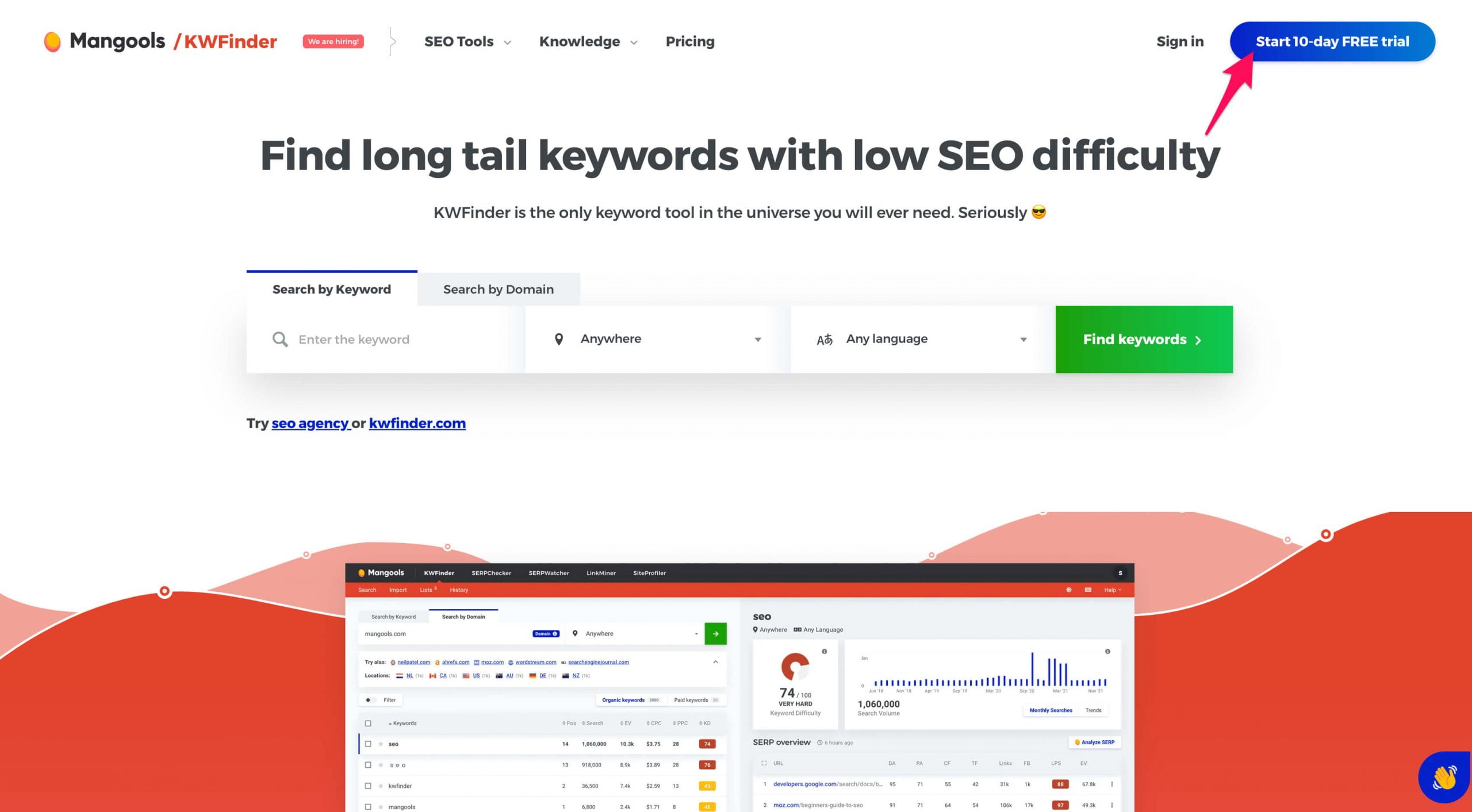
To use KWFinder, just enter in a seed keyword and then select your target country.
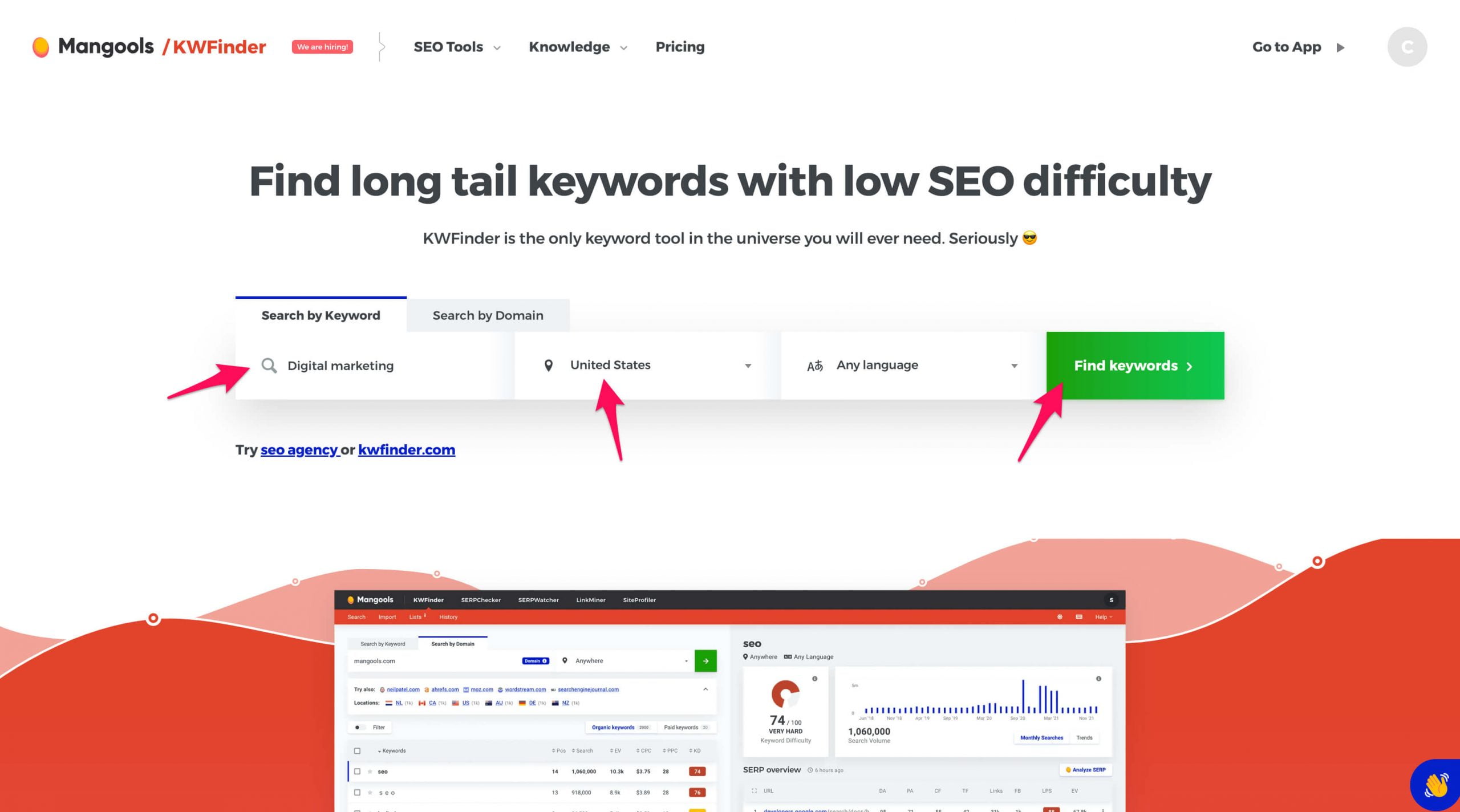
Then, KWFinder will show you how many people are searching for that keyword every month as well as some related keywords.

They’ll also show you the SEO difficulty for each keyword (which is basically how hard it would be to rank # on Google for that keyword) so you can prioritize the keywords with the lowest difficulty.
All of these tools are great for helping you discover keywords to include within blog posts.
And, as a result, it increases your organic rankings and (you guessed it,) traffic.
But…
Where do you use these keywords exactly?
I’m glad you asked.
I’ve ranked #1 for thousands of keywords and I always place them in the:
- Title/H1 of the article.
- Introduction of the article.
- H2/H3 tags.
- Body of the article.
- Conclusion.
- Alt text of images.
- File names of media.
It’s as simple as that. Use a blueprint like this to keep things easy and see results.
3. Create a customer persona
If you want to get more traffic to your blog, it’s important that you create a customer persona.
A customer persona is basically a semi-fictional representation of your ideal reader.
It includes information like their demographics, interests, pain points, and how they found out about your blog.
Creating a customer persona will help you better understand who you’re writing for and how to reach them.
To create a customer persona, start by making a list of all the different types of people who could read your blog. Here’s a template you can use:
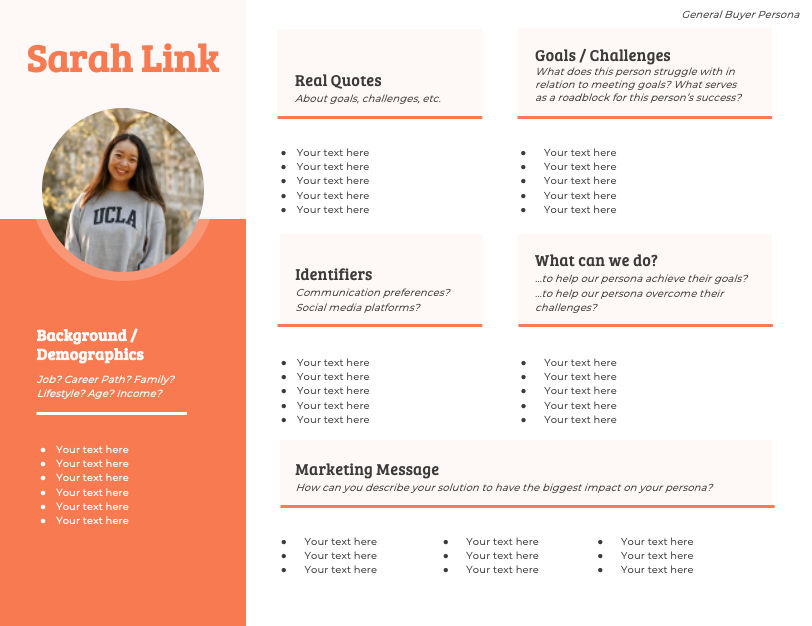
For example, if you have a blog about parenting, some of your personas might be “new mom,” “stay-at-home dad,” or “working mom.”
Once you have your list, start filling in the details for each persona.
What are their demographics? What are their interests? What pain points do they have that your blog can help with?
Answering these questions will help you create a customer persona that you can use to guide your content strategy.
By creating a customer persona, you’ll be able to better understand who you’re writing for and how to reach them. This will help increase traffic to your blog as well as conversion rates.
4. Survey your audience for content ideas
I’m a huge nerd when it comes to analytics.
It’s also one of the best ways to discover what content you should be posting on your blog.
For example, you will notice that certain topics and styles of posts get more traffic and engagement.
That’s a hint that you should publish more of those.
Better yet, why not ask your audience?
You can do this in a number of ways, but one of the easiest is to simply add a poll to your blog.
WPForms allows you to create polls and surveys, and it’s super easy to use and they have a free plan.
Once you’ve installed WPForms, creating a survey is as easy as drag-and-drop.
Just add the questions you want to ask and then choose how you want people to respond.
For example, you could ask them to rate how helpful your post was on a scale from one to five or you could ask them to choose between two topics for your next post.
Asking your audience for content ideas is a great way to ensure that the content you’re creating is something that they actually want to read.
It’s also a great way to get ideas for new content that you may not have thought of on your own.
5. On-page search engine optimization
Keyword research is one part of growing a blog organically and getting traffic from search engines.
However, your website and content as a whole need technical optimizations for the most traffic and best results.
This is called on-page SEO.
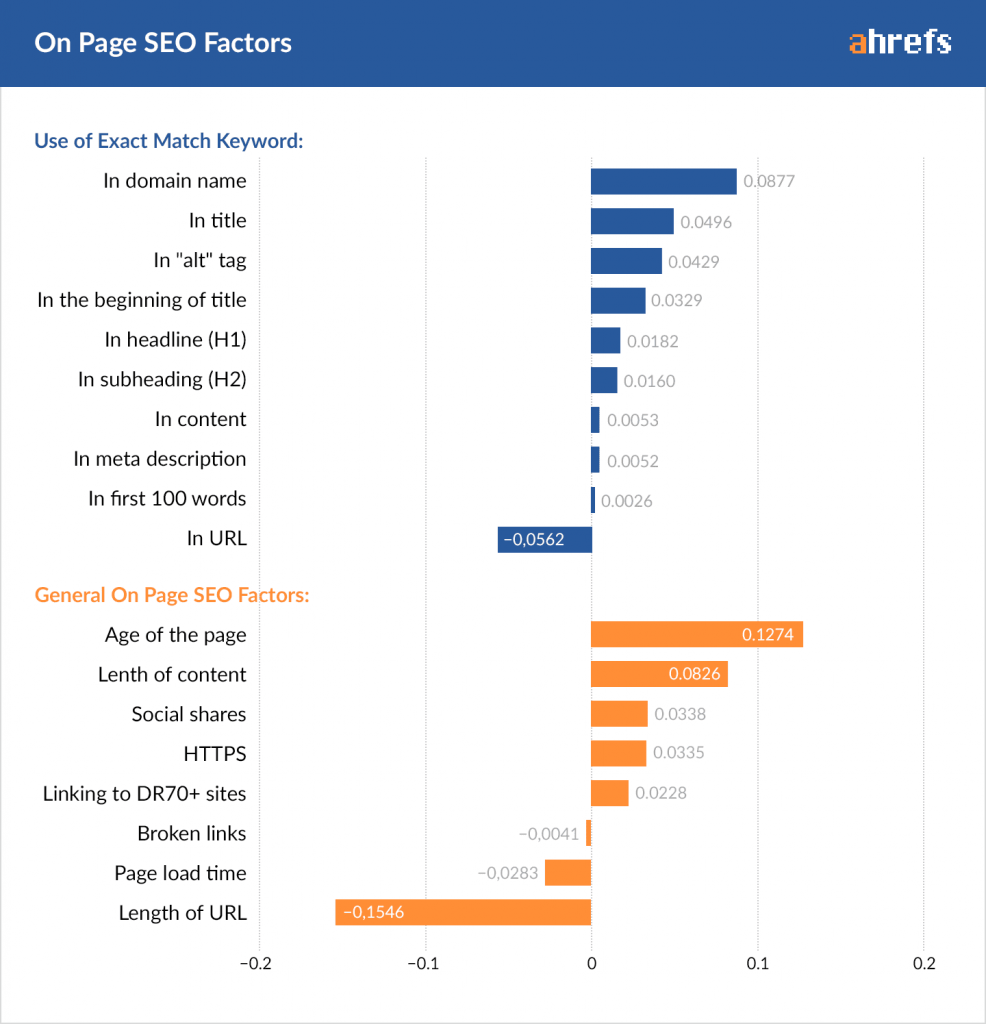
It’s basically how you optimize your website and content to rank higher in search engine results pages.
Here are a few quick tips for how to do technical on-page SEO:
- Speed up your website using a tool like GTMetrix to discover weak points.
- Apply schema markup and open graph data.
- Compress images to increase page speed and improve user experience.
- Internal link to other pages on your blog with optimized anchor text.
- Use HTTPS to keep your site secure.
- Check for duplicate pages and redirect them.
- Make sure your website is mobile-friendly.
By optimizing your website for search engines, you’re more likely to show up higher in search results which will help increase traffic to your blog.
That brings me to my next point.
6. Build authoritative backlinks
In order for your website to rank higher in search engine results pages, you need backlinks from high-quality websites.
A backlink is when another website links to yours. Think of it like a voting system.

The more high-quality backlinks you have, the better.
Here are a few ways to get authoritative backlinks:
- Write guest posts on other blogs in your niche and include a link back to your website.
- Submit articles to sites like Medium and Huffington Post.
- Be active on social media and include links to your blog posts when you share them.
- Participate in forums and include a link to your website in your signature.
- Reach out to bloggers and influencers in your niche and offer to do an interview or write a review.
- Help journalists with a platform like HARO.
The goal is to get backlinks from websites that are relevant to your niche and have high domain authority.
Domain authority is how well a website is likely to rank on search engine results pages.
The higher the domain authority, the better.
You can check the domain authority of any website using Ahref’s free tool.
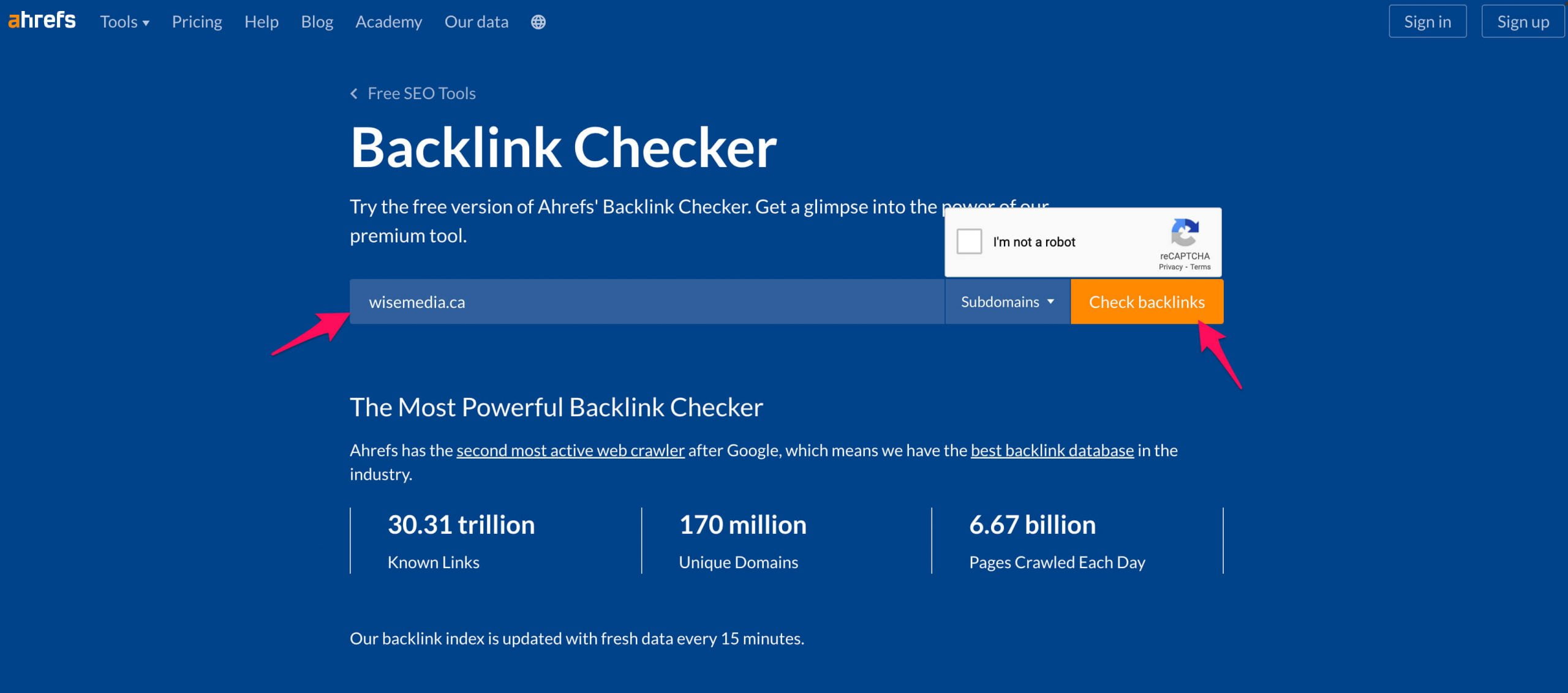
This will display a website’s authority and backlink profile.
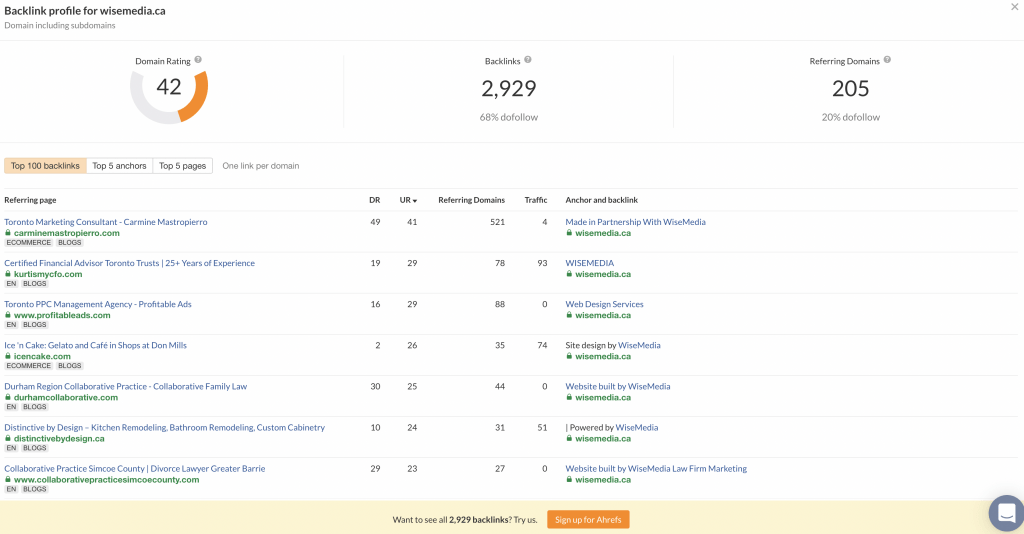
Getting high-quality backlinks will help increase traffic to your blog as well as your ranking on search engine results pages.
7. Guest post on other publications
Guest posting, as I just brought up, isn’t only good for generating backlinks but also referral traffic.
Referral traffic is when people click on a link from another website and are brought to your website.
It’s important because it helps diversify your traffic sources and can help increase the number of people coming to your website.
To guest post on other publications, you’ll want to find websites that accept guest posts in your niche.
I suggest looking up lists of sites that accept guest posts like this one to keep it simple.
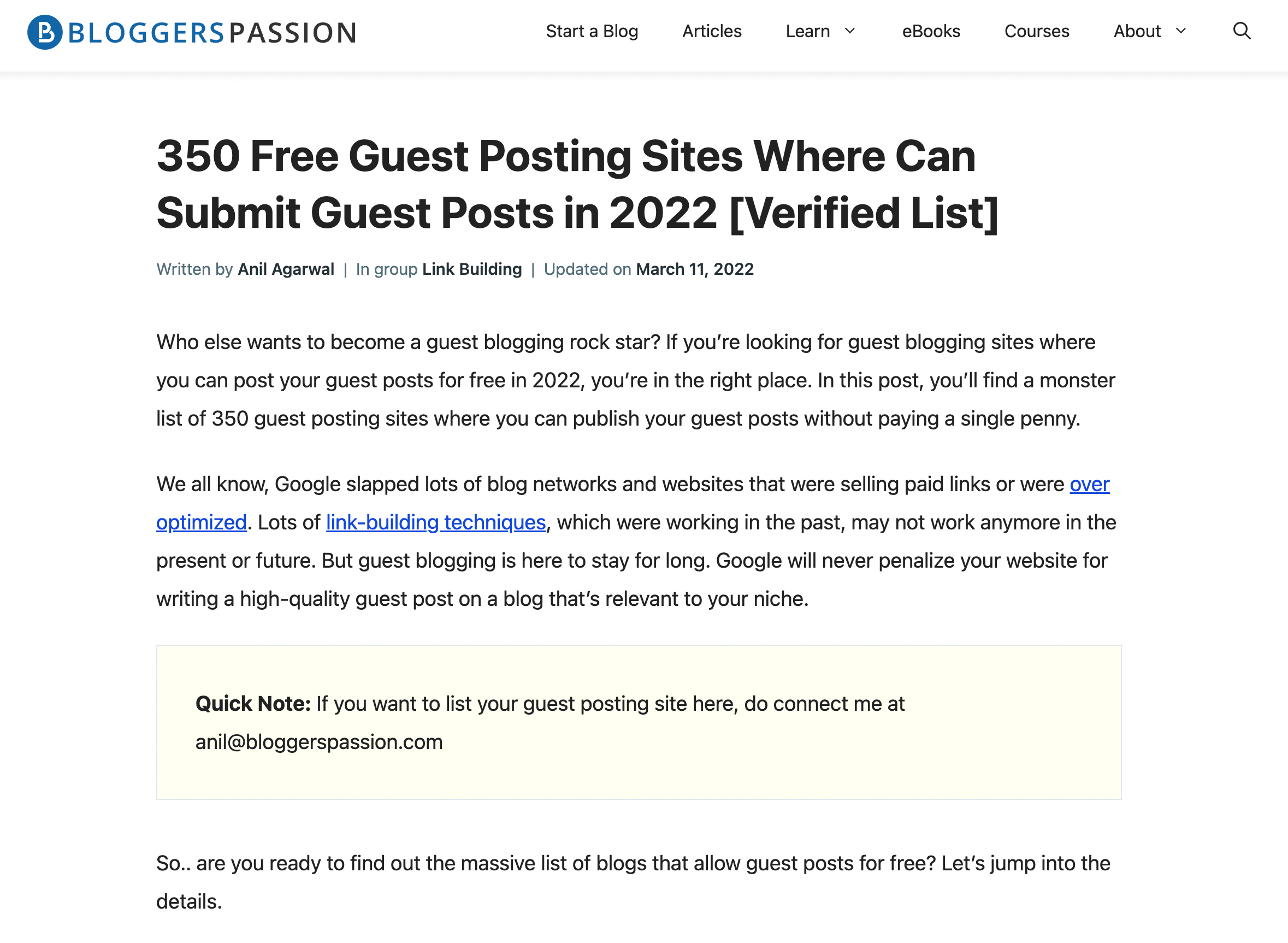
Once you’ve found a few, reach out to them and pitch them an article idea that would be a good fit for their site.
If they’re interested, write the article and include a link back to your website in your author bio.
This will help increase traffic to your blog as well as generate some high-quality backlinks.
Most publications will include a biography at the end of the article that you can also use to include a link and more about yourself.
8. Share content on social media
Social media is a great way to increase traffic to your blog as well as build relationships with other bloggers and influencers in your niche.
I’m talking Facebook, Twitter, LinkedIn; you name it.
When you share your content on social media, make sure to use hashtags and tag other relevant people or brands.
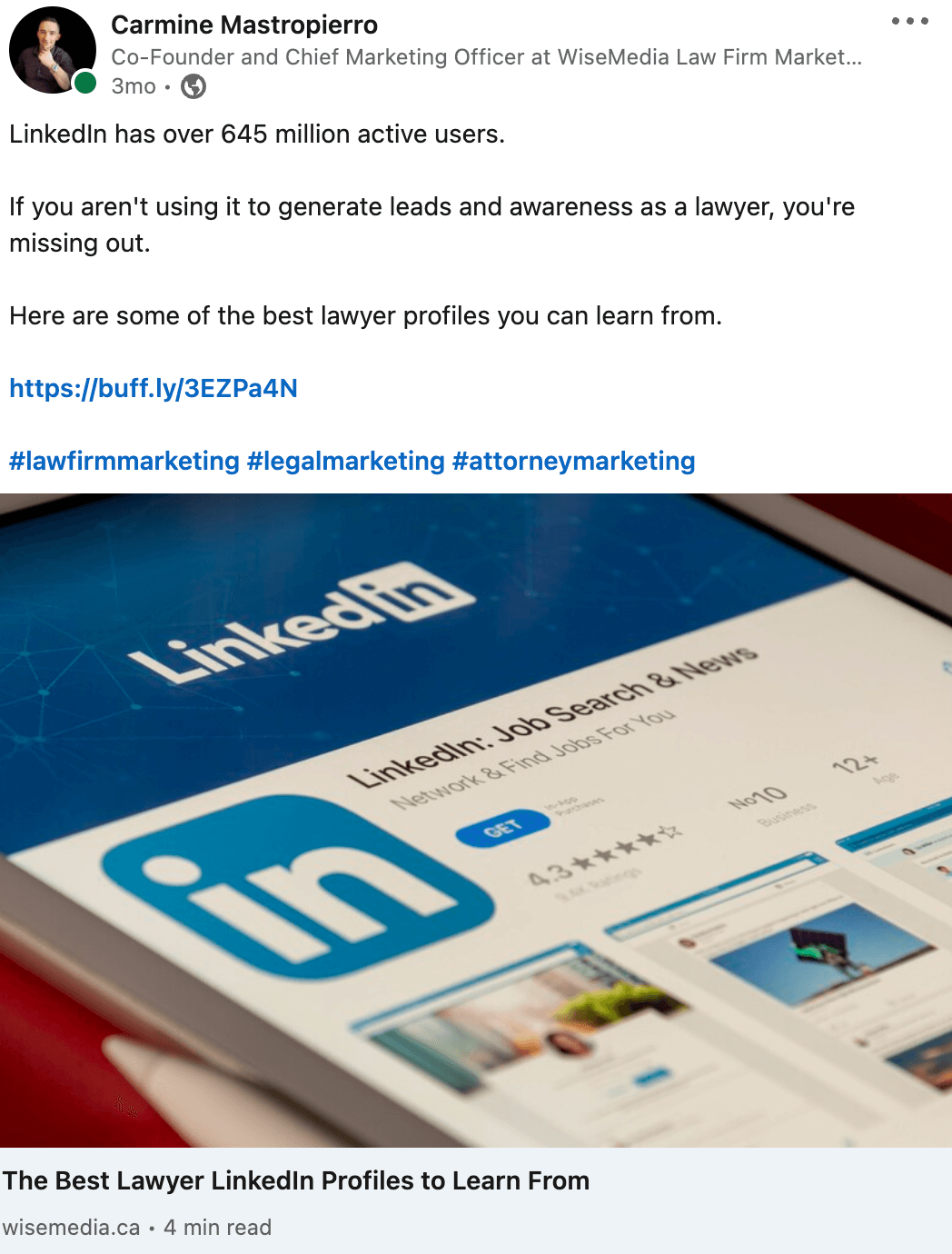
This will help increase the reach of your post and get more eyes on it.
It’s also important to be active on social media and engage with others in your niche.
You can do this by commenting on their posts, sharing their content, or even sending them a direct message.
The goal is to build relationships with others in your niche so that they’re more likely to share your content and send traffic your way.
9. Post in social media groups
Imagine being able to reach hundreds of thousands of people at once…
That’s the power of groups on platforms like Facebook and LinkedIn.
Most groups are free to join and you can use them to promote your content, build relationships, and drive traffic to your blog.
When posting in groups, make sure that you’re adding value and not just promoting your own content.
Share other people’s content, leave thoughtful comments, and help others out when you can.
This will help you build trust and credibility which will make it more likely for people to click on your links and visit your website.
To find groups on Facebook, simply search for keywords related to your niche and filter by groups. For example, if you blog about marketing, you could search “marketing” or “social media marketing.”
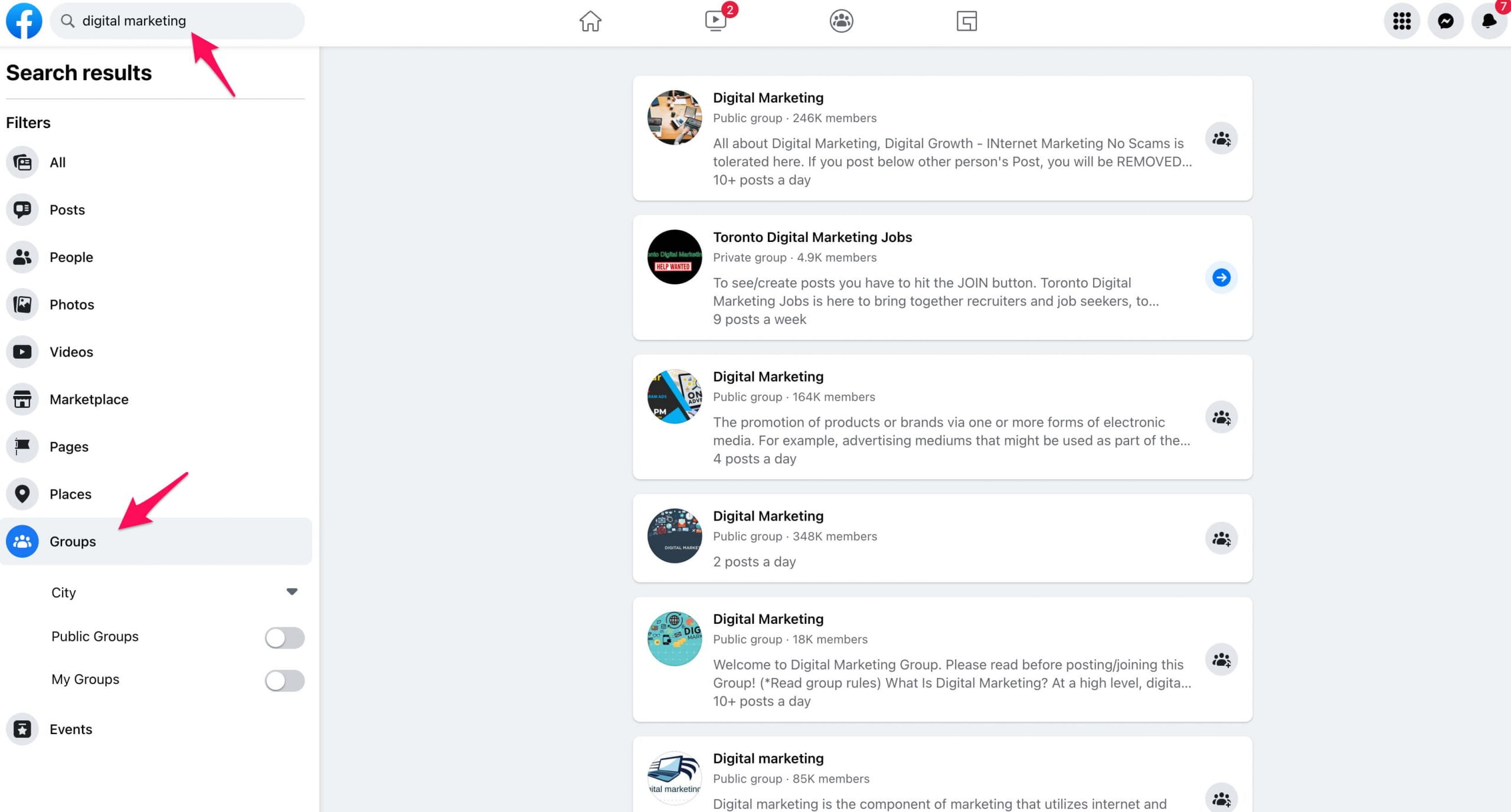
You can also use LinkedIn Groups to connect with others in your industry and promote your content.
To find groups on LinkedIn, follow the same steps as you did on Facebook.
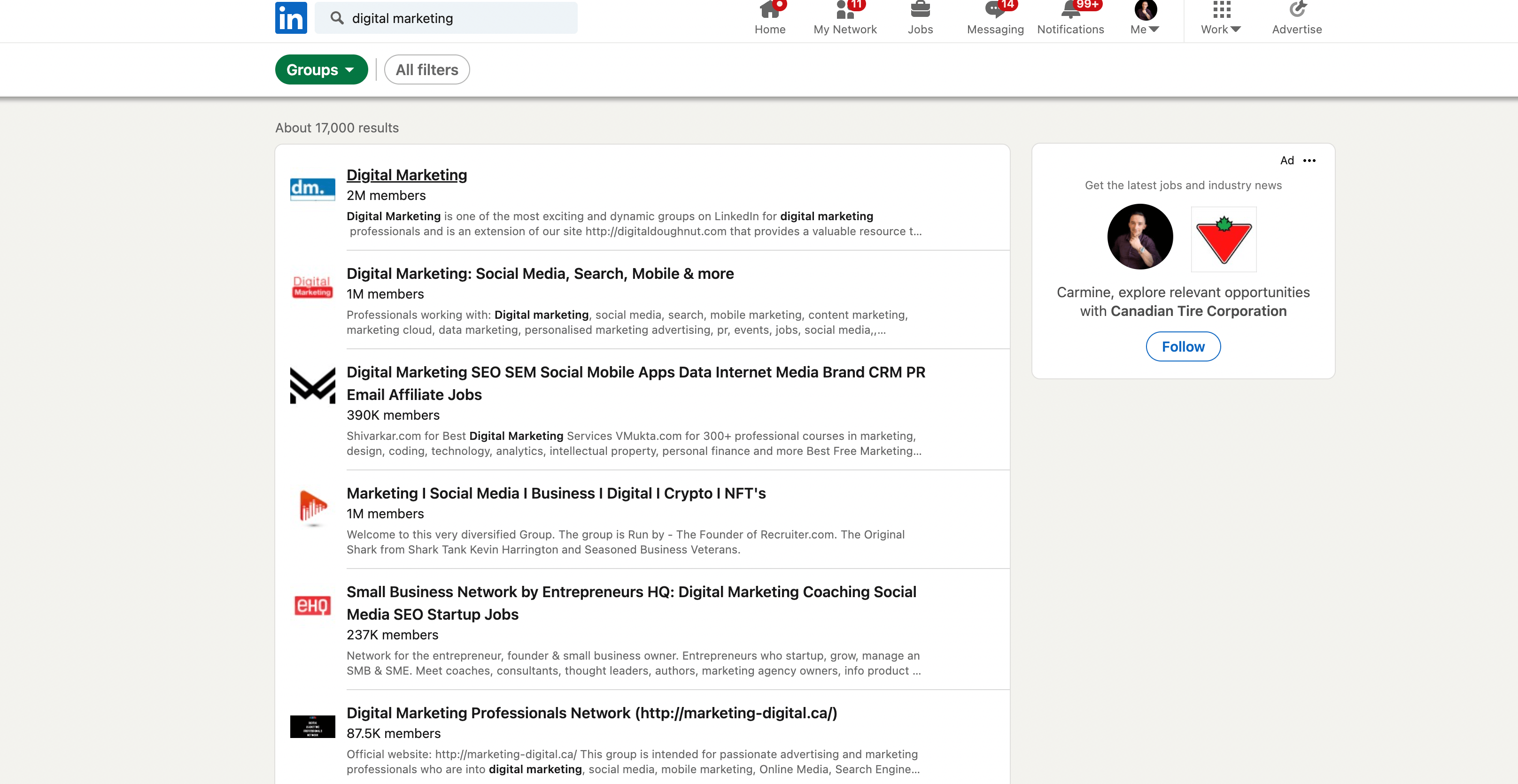
Make sure to read the group description before joining to make sure that it’s a good fit for you.
And once you’re a member of a group, be active and engage with others as much as you can.
Joining social media groups is a great way to reach more people, build relationships, and drive traffic to your blog. Just make sure that you’re adding value and not just promoting your own content.
10. Repurpose blog posts on Pinterest as infographics
Repurposing is the name of the game when it comes to getting more blog traffic.
This is the process of taking your blog post and reformatting it for other channels.
One great way to do this is to create an infographic from your blog post and share it on Pinterest.
Infographics are a great way to increase traffic because they’re easy to consume and can be very viral.
To create an infographic, you can use a free tool like Canva.
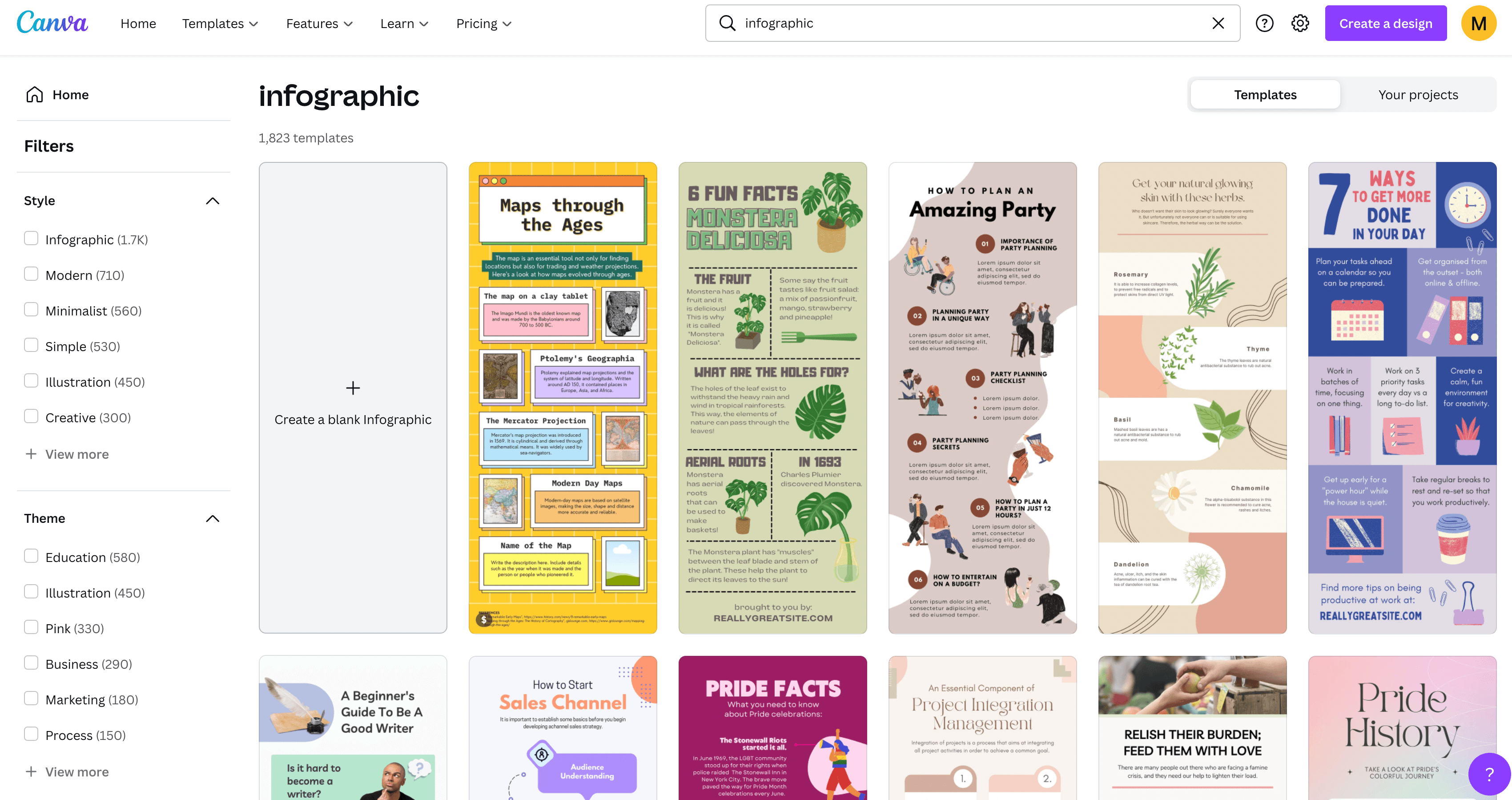
Once you have your infographic, make sure to optimize it for SEO by including keywords in the title and description.
You can also include a link back to your blog post in the description so people can read the full article if they’re interested.
I also like to embed the infographic back in the original blog post so they both send traffic to each other.
11. Turn your blog posts into YouTube videos
Another great way to repurpose your blog content is to turn it into a YouTube video.
After all, YouTube is owned by Google and the second biggest search engine on the planet…
This is a great strategy because you can reach a whole new audience with your existing content.
To do this, simply record yourself reading your blog post or talking about the main points.
You can also add slides with images or graphics to help illustrate your points.
Once you have your video, upload it to YouTube and optimize it for SEO by including keywords in the title, description, and tags.
You can also include a link back to your blog post in the description.
Check out my YouTube channel to more ideas:
12. Record blog posts as podcast episodes
Hey, maybe showing your face on camera isn’t your thing.
That’s okay.
Recording podcast episodes using blog posts as scripts is something everyone can do with minimal knowledge and equipment.
Hell, you can do it with a smartphone and that’s it if you really wanted…
This is a great way to reach a new audience and build relationships with other influencers in your industry.
Plus, it’s really easy to get started.
All you need is a microphone and some recording software like Audacity (which is free).
Once you have your audio recording, upload it to iTunes or wherever people listen to podcasts and optimize it for SEO by including keywords in the title, description, and tags.
Include a link back to your blog post in the show notes so people can read the full article if they’re interested.
If you haven’t listened to my podcast yet, give it a shot!
13. Answer questions on Quora with your content
Quora is a powerhouse for blog traffic.
Yet, not enough bloggers take advantage of it.
Quora is basically a Q&A platform where people can ask questions and get answers from experts in various industries.
You can use Quora to build relationships with other influencers, promote your content, and drive traffic back to your blog.
To do this, find questions that are related to your niche or industry and provide value-packed answers.

Make sure to include a link back to your blog or website in your answer so people can learn more about you and your work.
You can also search Quora for questions that have been asked about your specific blog post and answer those as well.
This is a great way to get targeted traffic from people who are already interested in what you have to say.
14. Build an email list
Email marketing has one of the highest returns on investment out of any marketing channel.
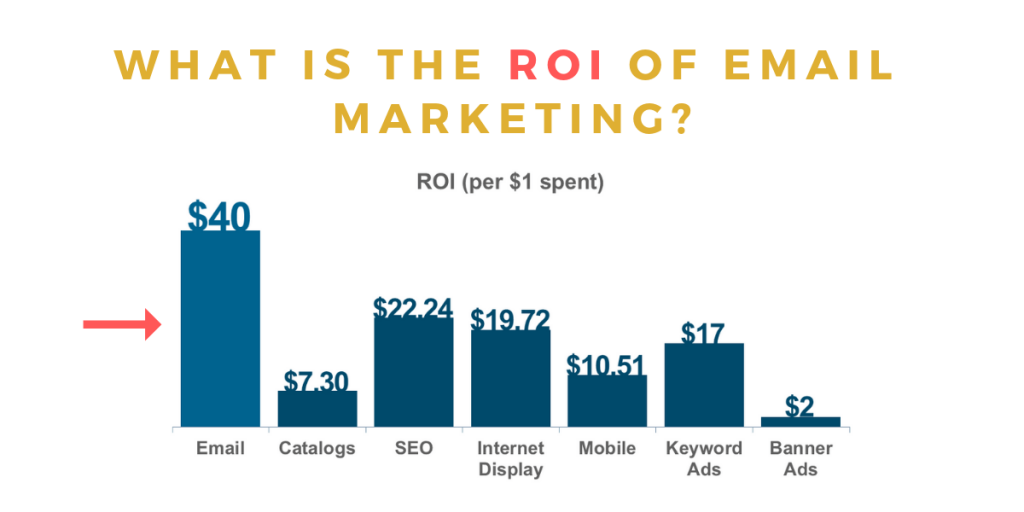
It’s been around for decades and practically every successful business uses it in some way.
That speaks on its own.
The fact is, if you’re not building an email list from your blog, you’re missing out on a ton of traffic and potential revenue. (Use these email copywriting templates when writing emails to your subscribers.)
Building an email list gives you a direct line of communication with your audience so you can promote your latest blog post, product, or service.
It’s also one of the most effective ways to drive traffic back to your site because people are more likely to click through from an email than they are from social media or other online channels.
To build an email list, you need two things: an opt-in form and email marketing software like SendFox.
An opt-in form is how people subscribe to your email list and email software helps you manage subscribers, lists, and more.

You can add an opt-in form to your blog by using a WordPress plugin like OptinMonster.
Once you have your opt-in form set up, start promoting it on your blog and social media channels.
You can also include a link to it in your email signature, guest posts, and other places online.
The more places you promote it, the more subscribers you’ll get.
And the more subscribers you have, the more traffic you can drive back to your blog.
15. Add social sharing buttons
One of the easiest ways to drive more traffic to a blog with little effort is through social sharing.
When you add social sharing buttons to your blog, it makes it easy for people to share your content with their followers and friends.
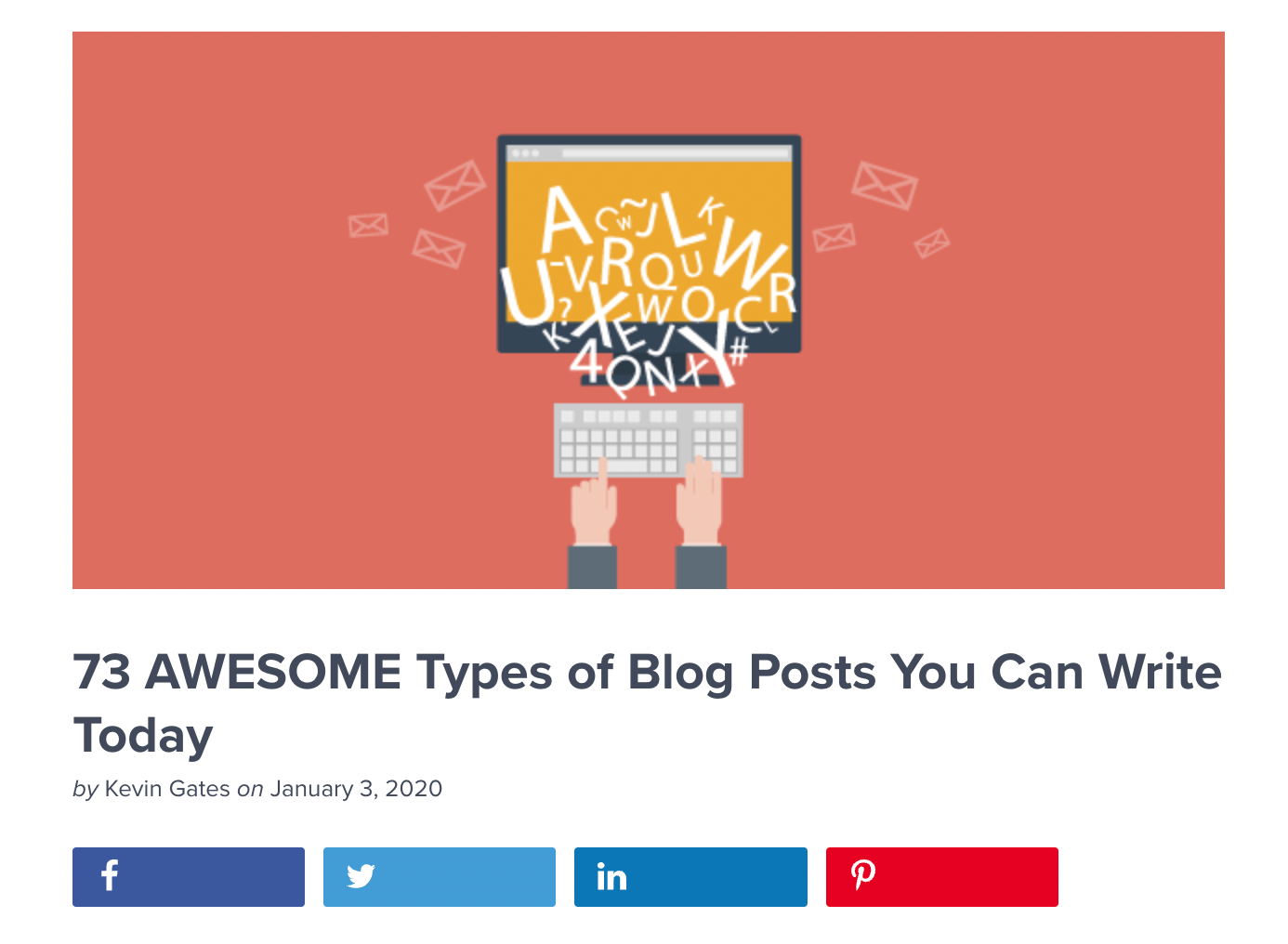
And when your content is shared, it gets seen by a whole new audience who may not have otherwise found it.
The best part?
It doesn’t cost anything to add social sharing buttons and they only take a few minutes to set up.
There are WordPress plugins like Social Warfare that make it super easy to add social sharing buttons to your blog.
Once you have the plugin installed, all you need to do is decide which social media platforms you want to include and where on your blog you want the buttons to appear.
You can also customize how the buttons look so they match your blog’s design.
Once you have the social sharing buttons set up, start promoting your content and see how much traffic you can drive back to your site.
16. Allow guest contributors on your blog
Early I mentioned becoming a guest blogger.
But, how about allowing guest contributions on your site?
You get free content (that means you don’t write it yourself!) and exposure.
I recommend asking the guest blogger to promote the article after it’s published a well to leverage their audience.
It’s a win-win.
Create a page on your website titled “Become a Contributor” or “Submit a Guest Post” for example.
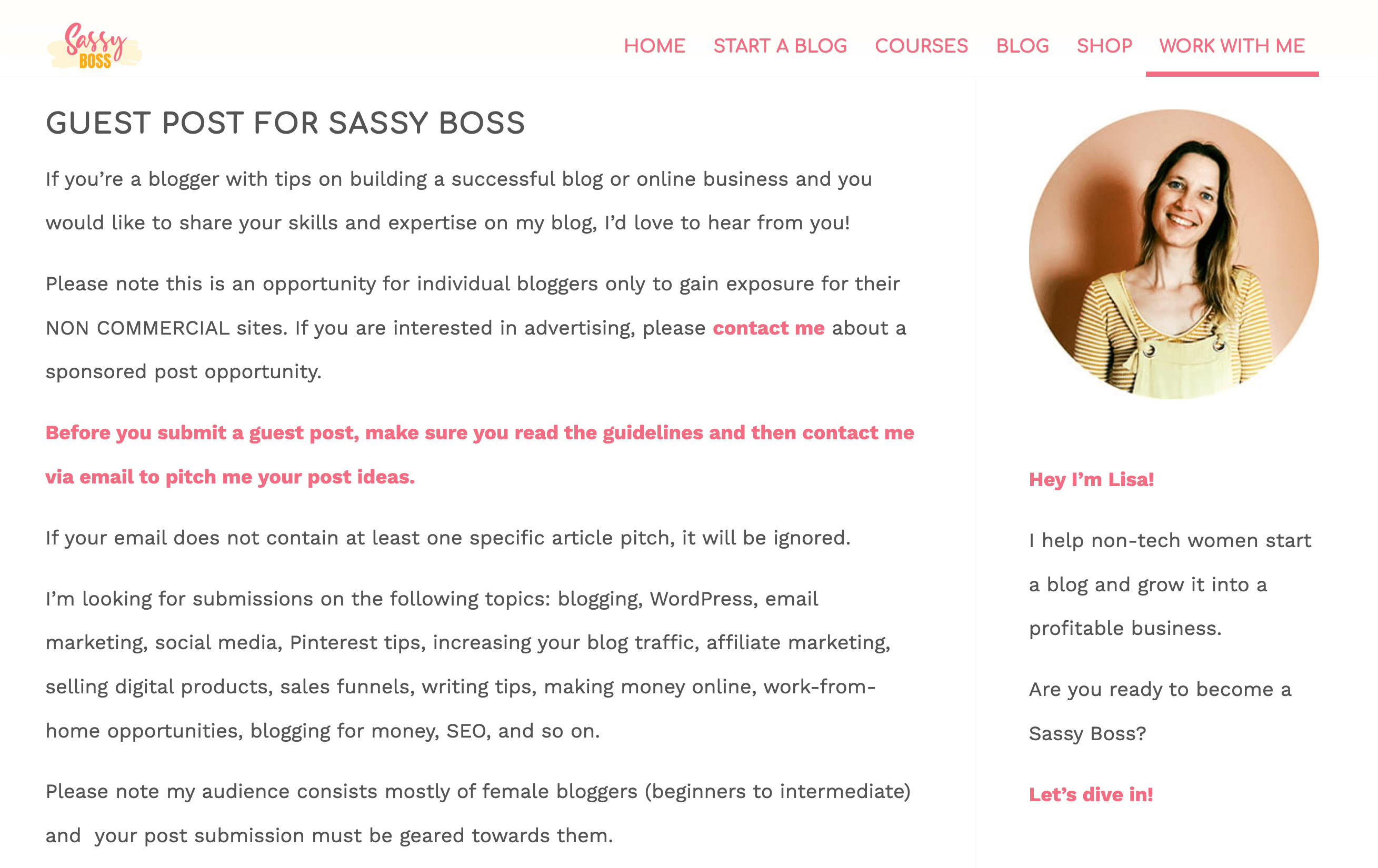
Include a list of requirements like accepted topics, word count, attribution, etc.
Add a form or email link to the page so interested writers can contact you.
17. Facebook Ads and boosted posts
You’re probably familiar with Facebook Ads.
But, did you know you can use them to drive traffic to your blog?
The best way to do this is by boosting a post that links to your blog.
When you boost a post, it appears in the newsfeeds of people who are not already following you.
You can target your audience by interests, demographics, and even behaviours.
This ensures that your boosted post is seen by people who are most likely to be interested in what you have to say.
To create a boosted post, start by creating a new post on Facebook and including a link to your blog.
Then, click on the “Boost Post” button and choose your budget, audience, and other options.
Once your post is live, you’ll start to see an increase in traffic to your blog.
18. Run Google Ads
While most businesses use Google Ads for driving sales, they can also be used for getting more traffic to your blog.
The best way to do this is by running an ad campaign that targets people who are searching for topics related to your blog.
For example, if you have a blog about health and wellness, you could target keywords like “healthy recipes,” “exercise tips,” and “weight loss.”
When people see your ad and click on it, they’ll be taken directly to your blog where they can read your latest post.
To set up a Google Ads campaign, you’ll need to create an account and then create a new campaign.
Choose the “Search Network Only” option and then enter in your targeted keywords.
From there, you’ll need to write your ad copy and choose where you want your ad to appear.
Here’s a good tutorial for beginners:
Publish the campaign once you’re finished and you’ll start seeing an increase in traffic shortly after!
Remember to analyze the data and make improvements to continually generate a better ROI.
19. Do a giveaway
Who doesn’t like free stuff?
One of the best ways to get more traffic to your blog is by running a giveaway.
People love freebies and will be more likely to visit your site if they know they have a chance to win something.
To run a successful giveaway, you’ll need to promote it across your social media channels and email list.
92.6% of giveaways happens on Facebook but leverage several channels for the best results.
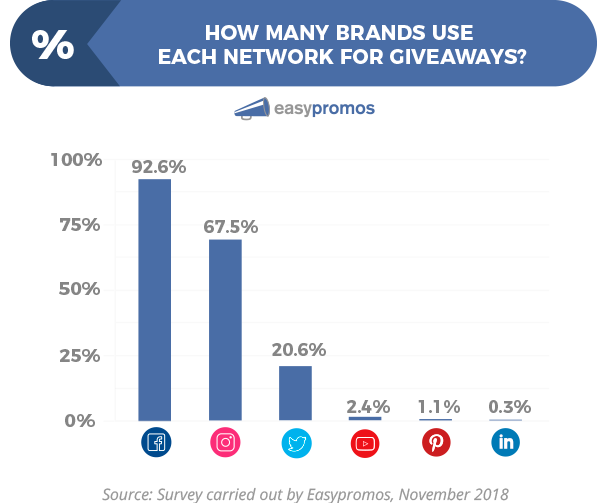
You can also partner with other businesses to promote the giveaway to their audiences as well.
Be sure to set rules and requirements for entry, like following your page or subscribing to your email list.
This ensures that people who enter the giveaway are actually interested in what you have to say.
The prize doesn’t have to be expensive either.
Something simple like an Amazon gift card or a free ebook will suffice.
You can also add an opt-in form to enter the giveaway so you get more subscribers during the process. 😉
20. Work with influencers
Last but not least, influencer marketing.
It’s no secret that people are more likely to trust recommendations from someone they know and respect.
That’s where influencers come in.
An influencer is somebody with a large following who can promote your product or service to their audience.
When you work with an influencer, they will create content that includes a call-to-action for their followers to visit your blog.
This could be in the form of a blog post, social media post, or even a video review.
According to data, Instagram posts are the most effective content format.
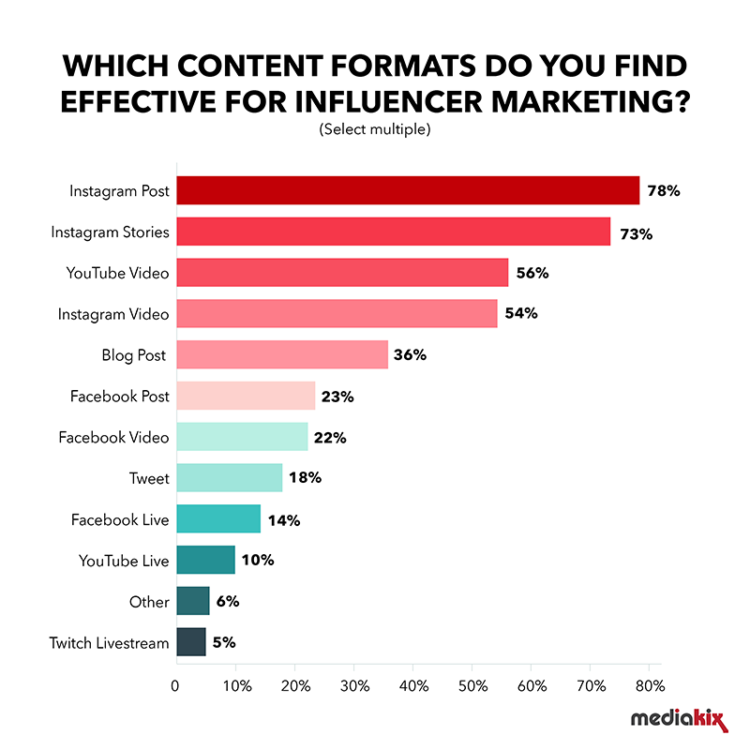
The key is to find an influencer who has an engaged following that is interested in what you have to say.
You can use platforms like BuzzSumo and Hootsuite Insights to find influencers in your industry.
Once you’ve found someone who would be a good fit, reach out to them and see if they’re interested in working with you.
If they are, then you can start brainstorming ideas for content that they can create.
Just remember to give them clear guidelines on what you expect and when you need it by.
Final thoughts on how to get more traffic to your blog
These are just a few of the many ways you can increase traffic to your blog.
Experiment with different strategies and see what works best for you and your audience.
And, most importantly, don’t give up!
I suggest sticking to a few different channels and tactics, measuring them, and then reassessing what works and what doesn’t.
Most of the time, the 80/20 rule comes into play.
That means 80% of your traffic will come from 20% of the channels and strategies you use.
It takes time and effort to build a successful blog, but it’s definitely worth it in the end!














